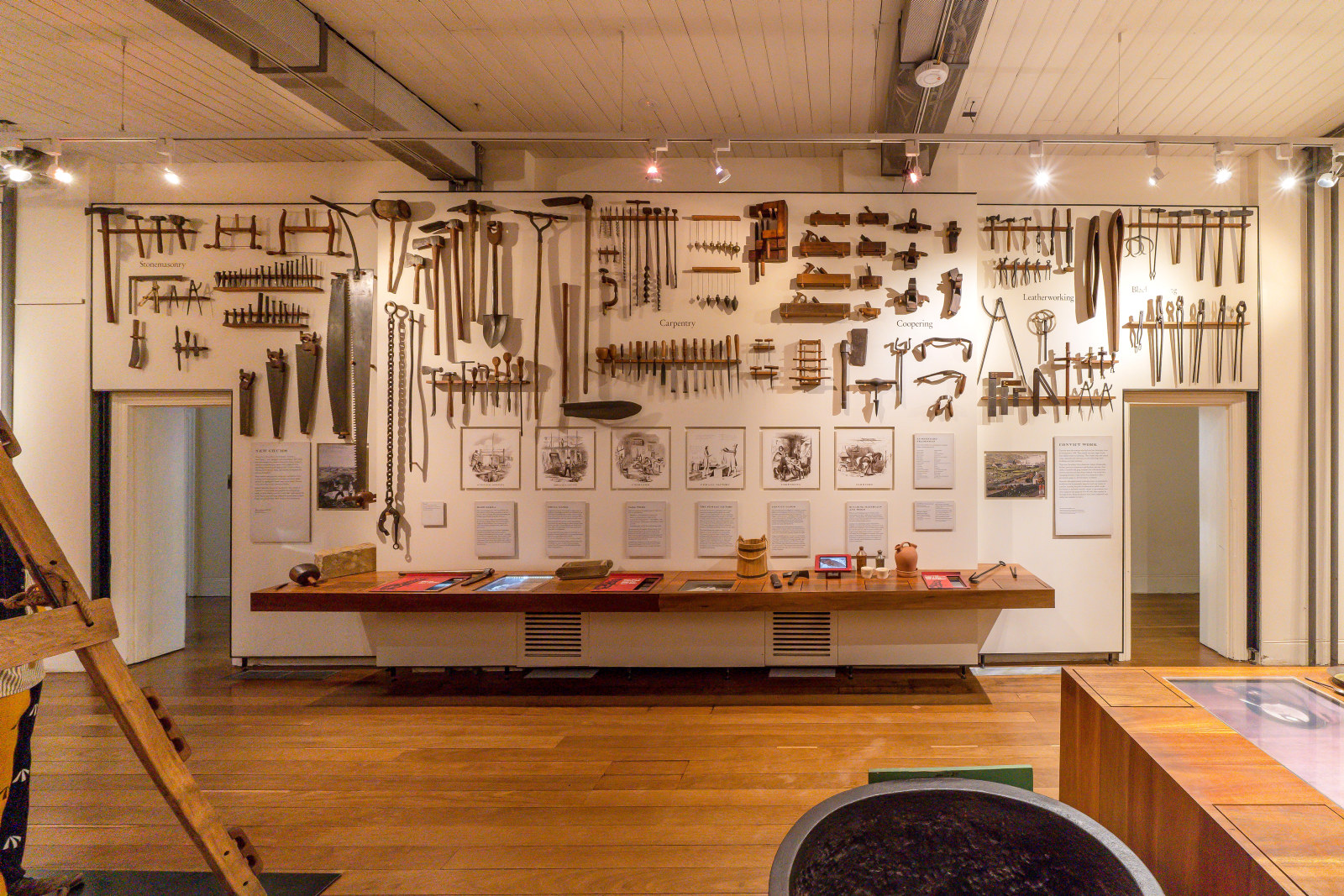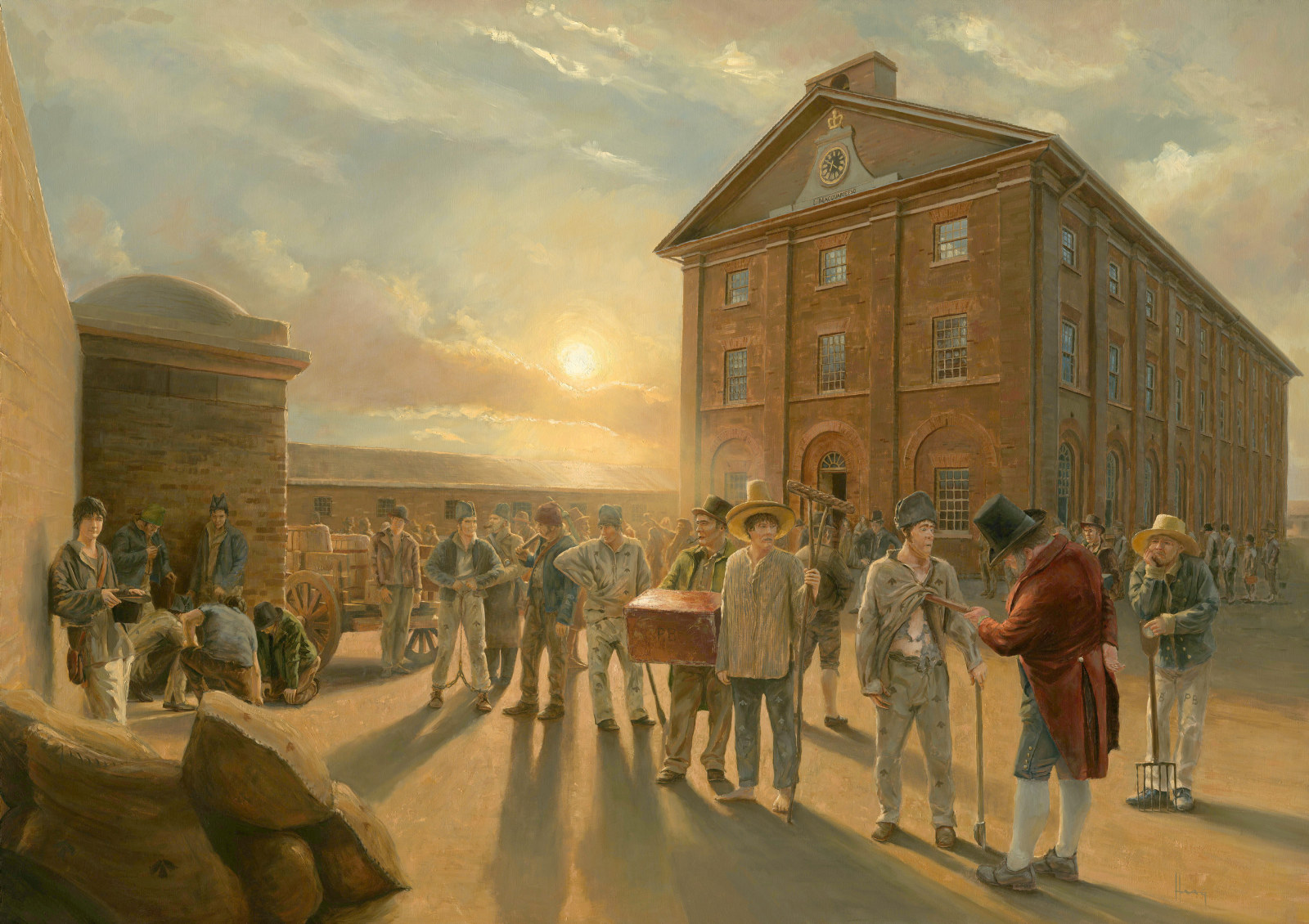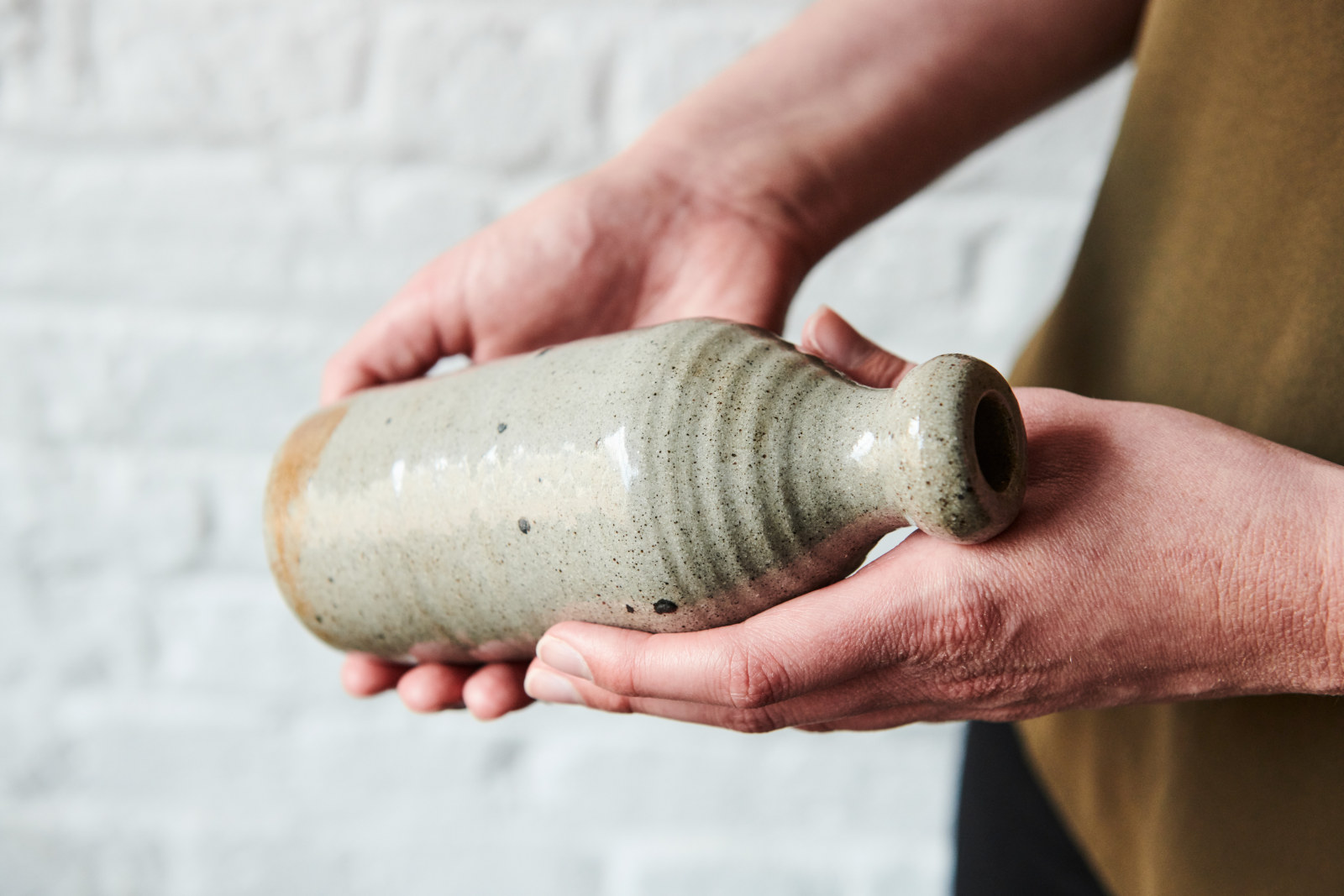Hammock Scrap
1819–1848
Found by archaeologists beneath the floorboards of Hyde Park Barracks, a few scraps of rope and coarse, but finely woven flax linen scraps like this one are all that’s left of the hundreds of hammocks that originally lined the convict sleeping wards. With usually 1000 or more men in the Barracks, all the hammocks in the wards would have been occupied, and the remainder of the men had to sleep on blankets on the floor. For most convicts, the only personal space they had was their assigned hammock. Strung up on strong wooden frames, like on board a ship, the large rooms had 70 hammocks, and the small rooms had 30. Occasionally, the hammocks were taken down to be washed, but most of the time they would have been foul-smelling and filthy.
In each room rows of hammocks slung to strong wooden rails, supported by upright staunchions fixed to the floor and roofs. 20” or 2’ in breadth and 7’ in length are allowed for each hammock; and the 2 rows are separated from each other by a small passage of 3’.
Commissioner John Bigge, 1822, in J.T. Bigge, Report of the Commissioner of Inquiry into the State of the Colony of New South Wales, London, House of Commons, 1822, 22.
Published on
Related

Convict Sydney
Objects
These convict-era objects and archaeological artefacts found at Hyde Park Barracks and The Mint (Rum Hospital) are among the rarest and most personal artefacts to have survived from Australia’s early convict period

Convict Sydney
Convict Sydney
From a struggling convict encampment to a thriving Pacific seaport, a city takes shape.

Learning resources
Explore our range of online resources designed by teachers to support student learning in the classroom or at home